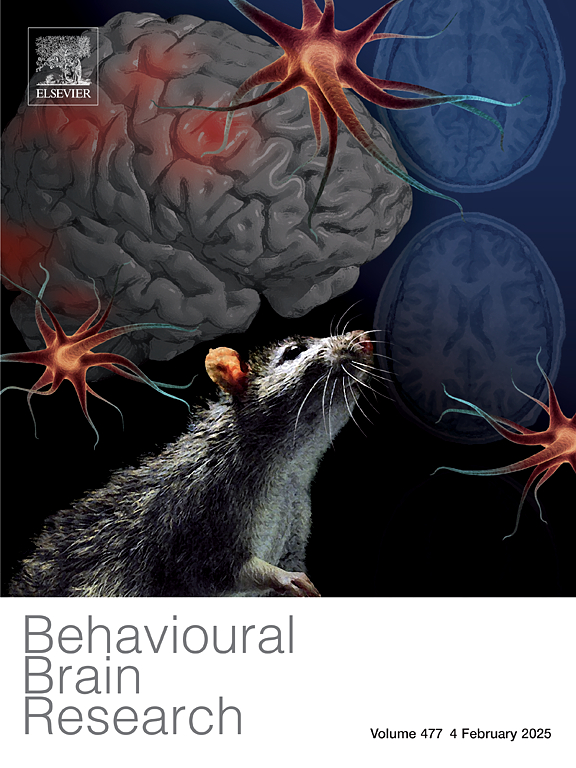HMGB1/RAGE signaling mediates the activation of microglia and participates in depressive-like behaviors and cognitive deficits in rats after ischemia-reperfusion
IF 2.3
3区 心理学
Q2 BEHAVIORAL SCIENCES
引用次数: 0
Abstract
Post-stroke depression (PSD) is a common psychiatric complication that occurs after stroke, especially in ischemic stroke (I/S). It has been reported that high-mobility group box-1 (HMGB1) is highly expressed in clinical PSD patients, but the exact molecular mechanism of its involvement in PSD is not completely clear, the neuroinflammation may participate in its development. Thus, we established a PSD rat model, observed behavioral and cognitive deficits, and found that the HMGB1/ receptor for advanced glycation end products (RAGE) pathway were activated in microglia. Glycyrrhizin acid (GA), an inhibitor of HMGB1, inhibited microglial activation, reversed the expression of HMGB1/RAGE, and ameliorated depressive-like behaviors in PSD rats. GA also reduced the expression of MAPK and NF-κB, which further led to decreased expression of IL-1β and NLRP3 inflammasome. These results suggested that the HMGB1/RAGE pathway was involved in microglial activation in the PSD model, promoting neuroinflammation and depressive-like behaviors.
HMGB1/RAGE信号通路介导小胶质细胞活化,参与缺血再灌注后大鼠抑郁样行为和认知缺陷。
脑卒中后抑郁(PSD)是脑卒中后常见的精神并发症,尤其是缺血性脑卒中(I/S)。据报道,高迁移率组盒-1 (HMGB1)在临床PSD患者中高表达,但其参与PSD的确切分子机制尚不完全清楚,神经炎症可能参与其发展。因此,我们建立了PSD大鼠模型,观察了行为和认知缺陷,发现小胶质细胞中HMGB1/晚期糖基化终产物受体(RAGE)通路被激活。甘草酸(Glycyrrhizin acid, GA)是HMGB1的抑制剂,可抑制小胶质细胞的激活,逆转HMGB1/RAGE的表达,改善PSD大鼠的抑郁样行为。GA还降低了MAPK和NF-κB的表达,进而导致IL-1β和NLRP3炎症小体的表达降低。这些结果表明,HMGB1/RAGE通路参与PSD模型的小胶质细胞激活,促进神经炎症和抑郁样行为。
本文章由计算机程序翻译,如有差异,请以英文原文为准。
求助全文
约1分钟内获得全文
求助全文
来源期刊

Behavioural Brain Research
医学-行为科学
CiteScore
5.60
自引率
0.00%
发文量
383
审稿时长
61 days
期刊介绍:
Behavioural Brain Research is an international, interdisciplinary journal dedicated to the publication of articles in the field of behavioural neuroscience, broadly defined. Contributions from the entire range of disciplines that comprise the neurosciences, behavioural sciences or cognitive sciences are appropriate, as long as the goal is to delineate the neural mechanisms underlying behaviour. Thus, studies may range from neurophysiological, neuroanatomical, neurochemical or neuropharmacological analysis of brain-behaviour relations, including the use of molecular genetic or behavioural genetic approaches, to studies that involve the use of brain imaging techniques, to neuroethological studies. Reports of original research, of major methodological advances, or of novel conceptual approaches are all encouraged. The journal will also consider critical reviews on selected topics.
 求助内容:
求助内容: 应助结果提醒方式:
应助结果提醒方式:


